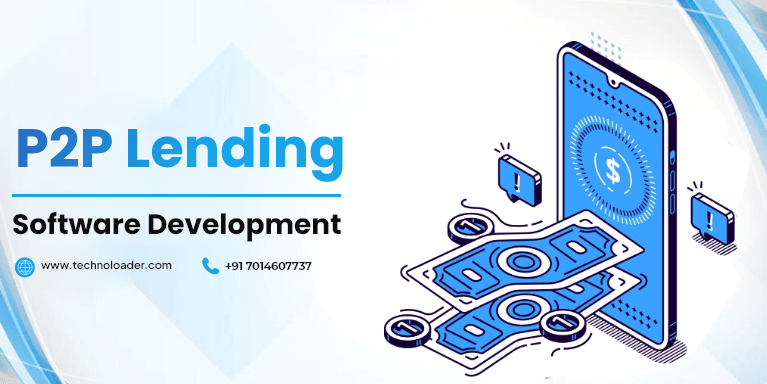Peer-to-peer (P2P) lending has emerged as a disruptive force in the financial industry, challenging traditional lending models and democratizing access to capital. P2P lending platforms connect borrowers directly with individual lenders, bypassing traditional financial intermediaries.
The success of these platforms is intricately tied to the robustness of P2P lending software, which plays a pivotal role in facilitating seamless transactions, ensuring security, and enhancing user experience.
Let us discuss everything about P2P lending software through this blog.
Call/Whatsapp: +91 7014607737 | Mail ID: [email protected]
Table of Contents
The Rise of P2P Lending
P2P lending has gained traction globally due to its ability to address the limitations of conventional banking systems. Traditional lenders often subject borrowers to lengthy approval processes, stringent criteria, and high-interest rates. P2P lending platforms, on the other hand, leverage technology to streamline the lending process, making it more accessible and efficient.
Key Features of P2P Lending Software
- User-Friendly Interface
P2P lending software development prioritizes user experience. Intuitive interfaces make it easy for borrowers and lenders to navigate the platform, complete transactions, and monitor their accounts. User-friendly design is crucial for attracting and retaining users in a competitive market.
- Risk Assessment Algorithms
Advanced risk assessment algorithms are the backbone of P2P lending platforms. These algorithms analyze the creditworthiness of borrowers based on a variety of factors, including credit history, income, and debt-to-income ratio. Accurate risk assessment is essential for maintaining a healthy loan portfolio and minimizing defaults.
- Secure Transactions
Security is paramount in financial transactions. P2P lending software incorporates robust encryption protocols to ensure the confidentiality and integrity of user data. Secure payment gateways protect both borrowers and lenders from potential cyber threats, fostering trust in the platform.
- Automated Documentation and Verification
Manual paperwork can be a significant barrier to the efficiency of lending processes. P2P lending software automates documentation and verification procedures, reducing the time it takes for loan approvals. Automated KYC (Know Your Customer) and AML (Anti-Money Laundering) checks add an extra layer of security.
- Scalability
P2P lending platforms need to be scalable to accommodate a growing user base and increasing transaction volumes. Scalable software architecture ensures that the platform can handle increased demand without compromising performance.
- Loan Management System
Effective loan management is essential for the success of P2P lending platforms. The software should facilitate loan origination, repayment scheduling, and automated reminders. Additionally, it should provide real-time updates on the status of loans, giving users transparency into their financial transactions.
- Regulatory Compliance
Compliance with financial regulations is non-negotiable in the P2P lending industry. The software must be designed to adhere to local and international regulatory frameworks, ensuring that the platform operates within legal boundaries and protects the interests of both borrowers and lenders.
Challenges in P2P Lending Software Development
- Regulatory Uncertainty
The regulatory landscape for P2P lending varies across countries, posing a challenge for developers. Adaptable software that can accommodate different regulatory requirements is crucial for global P2P lending platforms.
- Fraud Prevention
P2P lending platforms are attractive targets for fraudsters. Developers must implement robust identity verification mechanisms and continuously update security protocols to stay ahead of evolving cybersecurity threats.
- Credit Risk Assessment
Designing algorithms that accurately assess credit risk is an ongoing challenge. Machine learning and data analytics play a crucial role in refining these algorithms and improving their predictive capabilities.
- Market Saturation
The P2P lending market is becoming increasingly saturated. To stand out, developers must innovate and provide unique features that differentiate their platforms from competitors.
How Much it Cost to P2P Lending Software?
The cost of developing P2P lending software typically falls within the range of $10,000 to $30,000, with variations based on the complexity of features, customization requirements, and the development team’s hourly rates. A basic P2P lending platform with essential functionalities, such as user registration, loan origination, and payment processing, may be on the lower end of the cost spectrum.
However, a more sophisticated platform incorporating advanced security measures, intricate algorithms for credit risk assessment, and a user-friendly interface could fall within the higher range. It’s important to note that ongoing maintenance costs and potential post-launch enhancements should also be considered in the overall budget. Engaging with experienced developers and clearly defining project requirements are crucial steps in determining the final cost of P2P lending software development.
Future of P2P Lending Software
P2P lending software development is at the forefront of transforming the financial landscape, empowering individuals and businesses to access capital in a more democratic and efficient manner. As technology continues to evolve, P2P lending platforms will likely adopt blockchain, artificial intelligence, and other cutting-edge technologies to further enhance their capabilities.
The success of these platforms hinges on the ability of developers to create secure, scalable, and user-friendly software that meets regulatory standards and addresses the ever-changing needs of the financial industry. With continuous innovation, P2P lending is poised to shape the future of finance, fostering financial inclusion and revolutionizing the way people borrow and lend money.
Why to Hire Technoloader for P2P Lending Software Development?
Hiring Technoloader as your P2P lending software development company will ensure a seamless and cutting-edge solution. Technoloader combines expertise in fin-tech development with a proven track record in creating secure and scalable P2P lending platforms. Their skilled developers understand the nuances of the financial industry, offering tailored solutions that adhere to regulatory standards.
With a commitment to innovation and client satisfaction, Technoloader delivers customized P2P lending software development services having user-friendly interfaces, robust security protocols, and advanced features. Choosing Technoloader means partnering with a reliable team dedicated to crafting P2P lending software that not only meets but exceeds the expectations of clients and users alike.
Quick Contact Us :
Call/whatsapp : 👉 +91 7014607737
Telegram : 👉 @vipinshar
Email : 👉 [email protected]



















